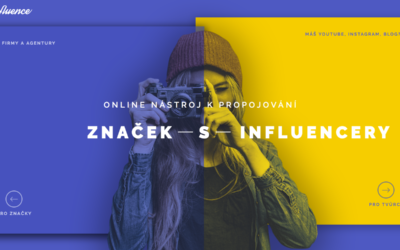On Tuesday, February 18, the 32nd Venture Club took place. D-Day, where Lafluence CEO Peter Varga presented opportunities to invest in his project. His platform is a market leader, connecting brands with influencers and facilitating influencer marketing, currently the fastest growing marketing trend. You can learn what influencer marketing is and how the Lafluence platform works in the article. (All club members can find information about the investment opportunity associated with the Lafluence project in the internal section of the website.)
Who are influencers?
An influencer is an individual who meets two basic conditions: they regularly post engaging content on social media (YouTube, Facebook, Instagram, Twitter, etc.) and have at least 5,000 subscribers. The areas that such influencers focus on are varied, most commonly including beauty and fashion, lifestyle, fitness, travel or food. Influencers show others their discoveries, successes and failures and give them advice or recommendations. People listen to them and are inspired by them. Their influence has often replaced the traditional media. What has made this possible?
The nature of influencer influence
There has always been a variety of people that others have recognized and respected. This usually included the elite. Their situation, however, is very different from today. How exactly? To express their views, the elites needed large private or state media, radio and television or newspapers. But access to them is not automatic; it requires contacts, already established authority and finance. This situation has changed. Three circumstances have contributed to this:
- Technological advances have made it possible for one person to produce a video, photo or graphic often with only a slightly better mobile phone.
- The emergence of platforms such as YouTube, Facebook and Instagram have given people media channels on which to publish for free and reach millions of people around the world.
- Young people are no longer interested in inauthentic media. Their main interest is in social media and the people who regularly post there, who are often like themselves. These people can subsequently become influencers.
The benefits of influencers
An influencer can therefore handle the creative, production and publishing part of the process themselves. He or she then usually does all this for free. He doesn’t need to acquire expensive equipment or pay production companies and media outlets to do this, as has been the case so far. But that’s not its only advantage. An influencer became an influencer precisely because he knows how to win people over, how to engage and inspire them. So the advantages of influencer over media are:
- People already trust the influencer. They don’t have to convince them and build credibility.
- He is authentic.
- Many people use adBlock in the online space to remove ads. But that doesn’t work on sponsored content from influencers. Therefore, an influencer can reach people that traditional advertising doesn’t reach.
Influencer marketing is the future of marketing
So, along with influencers, there is a way to promote services or goods cheaply, and this is what is called influencer marketing. It is more flexible, cheaper, but is it also effective? According to a recent survey in the Czech Republic, 84.2% of people have already given an influencer a recommendation. Globally, $5.5 billion will be invested in influencer marketing in 2019, and that number is set to rise to $22.3 billion in 2024. No one expects a change in the trend. Only the platform being used will change, not the method of outreach. But influencer marketing also has its pitfalls. What are they?
The pitfalls of influencer marketing
The first pitfall is the choice of influencer itself. Each influencer usually deals with a specific area that has already attracted a specific group of people. A car racer attracts fans of cars and racing, and a fashion influencer attracts individuals with an interest in fashion. It is therefore crucial for a company to choose an influencer who is already talking about similar products or services, or at least could be. Otherwise, it is doomed to failure. The second pitfall is managing the campaigns themselves and the third is evaluating them. All these problems are solved by the Lafluence platform mentioned at the beginning.
The Lafluence platform
The Lafluence platform, which Venture Club allows you to invest in, can therefore solve the problems of influencer marketing. It offers a clear database of more than 5,000 well-described influencers and automates campaign control and evaluation. It also automatically negotiates all formal aspects of the contract. The client submits an enquiry, receives a quote and, if interested, makes a deposit, which will be paid to the influencer after deduction of the fee when the task is completed. The task is controlled by both the platform and the client. This protects both sides of the contract. The fact that this is a step in the right direction is proven by the more than 1,000 registered companies and agencies and over 800 commissioned campaigns from brands such as Yves Rocher, Nestle, L’Oréal, Pepsi, Vodafone, Dáme Jídlo, Über and the largest media agency networks such as OMD and GroupM.
The advantage of investing in this project is that the platform is now viable and generates interesting turnover. The money invested will mainly go to improving the technical background and expanding the team faster, with the aim of creating a mobile app and succeeding in expanding abroad. A very interesting return is expected within 5 years. Of course, we are also looking forward to the interest of other investors and synergies with our other projects – Behavee for better campaign metrics and PetExpert as an advertiser in a new channel to sell the PetExpert brand and insurance.
Will you join us? Project details are available to members in the Investments section, after logging into the Venture Club site.

